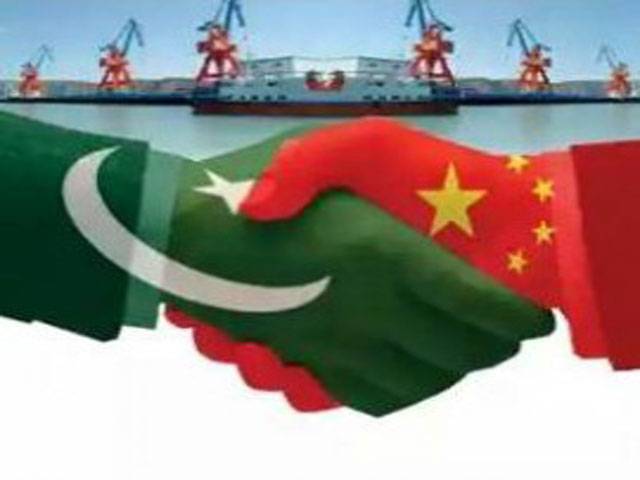ISLAMABAD - Showing serious concern over the lack of transparency in the China Pakistan Economic Corridor (CPEC) projects, economists and diplomats yesterday said the nation could not reap benefits associated with the corridor by hiding information from public.
The experts also lamented the allocation of $34 billion for the generation of around 17,000MW, terming it too expensive and irrational. The cost benefit and environmental analysis of the CPEC projects have not taken place and if took place then the government is hiding it from the public, the economists said.
“Unfortunately, the CPEC is a well-guarded secret and with little information that is available, it is not possible to separate myth from reality,” Dr Ather Maqsood, HoD Economics Department, NUST, said this while addressing a two-day national conference on ‘CPEC: Macro and Micro Economic Dividends for Pakistan and the Region. The event was jointly organised by the Islamabad Policy Research Institute and Hanns Seidel Foundation started here on Tuesday.
Athar Maqsood said that there is also difference of opinion of how many Pakistanis can get employment in the CPEC. “According to the government of Pakistan’s claim about 1.5 to 2 million Pakistanis will get jobs in the corridor projects but as per the estimates provided in Chinese documents 500 to 1,000 Pakistani will get jobs in the CPEC and the rest will be Chinese nationals,” he said.
Dr Ashfaque Hassan Khan, Principal and Dean School of Economics, NUST, Islamabad, said that the CPEC may change the face of Pakistan’s economy, if all goes well. Today, half a million tonnes cargo is being handled via Gwadar. Next year, it is expected to reach a million. However, when the port becomes fully functional, it will have the capacity to handle 300 to 400 million tonnes of cargo. The entire capacity of Indian ports is 500 million tonnes per year while the biggest US port has the annual capacity of 80 million tonnes.
He said that the CPEC is really a great opportunity for Pakistan but only the claim that it is a game changer will not make it so. ”The government should find out what is required to make it a game changer,” he added. What the government is waiting for why are it is not sharing information with anyone, he said. “I don’t think that the department in charge of the CPEC is ready or interested in the execution of such a huge project and the seriousness can be gauged from their presence in such an informative session,” Ashfaq said.
Former minister for finance and Chairman Pakistan-China Centre for Economic Cooperation, Lahore Dr Salman Shah outlined how the CPEC and economic integration with China will produce a two-tier private sector in Pakistan. On one side, the great companies oriented to the export market, with access to Chinese financing and partnerships, will greatly benefit.
However, when economic power will be concentrated in efficient producers that can count on foreign financing, most small and medium size businesses that have to confront high financial costs in order to improve their technological capacity will be left behind, he warned.
To a query, he said the Free Trade Agreement with China is worst than the Chinese trade agreements with ASEAN. With current FTA, it is impossible for Pakistani businessmen to enter the Chinese $18 trillion market, he warned.
Earlier in his inaugural remarks, Chief Guest Dr Mujahid Kamran, Vice Chancellor, Punjab University, Lahore, said that Pakistan’s strategic location and its great mineral resources give it an edge in the region. However, he warned while the CPEC is an opportunity, it is also a challenge for Pakistan since it requires economic and governance reforms, along with massive investment in trained and educated manpower. With the number of Ph.Ds on the rise, the latter situation has seen much improvement but the government needs to allocate more funds towards Research and Development (R&D).
Ambassador Inamul Haq, former foreign minister, as chair summed up the cumulative advantages of the CPEC to China and Pakistan. He said that Punjab government was very secretive about the orange line train project and they even disclosed about it in the court. Dr Ather Maqsood Ahmed, HoD Economics Department, National University of Science and Technology (NUST), Islamabad, reviewing the economic dividends of the CPEC for Pakistan outlined its importance for the agriculture, industrial and services sector.
He highlighted that while agricultural development of China and Pakistan will take place on the principle of comparative advantage and mutual benefit, achieving the objectives of the 17 agriculture-centric projects was dependent on how quickly counterpart experts in specific areas were assigned; public-private partnership developed; and federal and provincial governments aligned. “The demonstration projects alone, unless replicated, are not expected to raise agricultural growth in any substantial way,” he argued.
While warily optimistic about Pakistan’s current economic growth, he cautioned that there is a room for improvement since growth in tax collection and the tax/GDP ratio remains low; the Public Sector Enterprises (PSEs) are continuously bleeding; and power theft and huge distribution and transmission losses have not been arrested. “How Pakistan benefits from the CPEC will depend on its adopted economic policies, and reforms to remove structural weaknesses,” he concluded.
Discussing the implications of the CPEC for domestic and regional trade, Dr Jahangir Khan, Associate Professor, Department of Economics, University of Balochistan, Quetta pointed out that intra-regional trade among the members of SAARC and ECO countries is around 5 per cent of their total trade which does not match the inherent trade potential. China Pakistan Economic Corridor can potentially change this dismal statistic and enhance regional economic integration.
Former ambassador and president IPRI, Sohail Amin, said that Pakistan’s economy is expected to achieve 4.7 per cent GDP growth in 2016. He said that the CPEC infrastructure projects, including the Processing and Industrial Production Zones along the Corridor route once completed would open up and connect the least developed districts of Balochistan, Khyber Pakhtunkhwa, and Gilgit-Baltistan, with the mainstream national and even regional economies.






